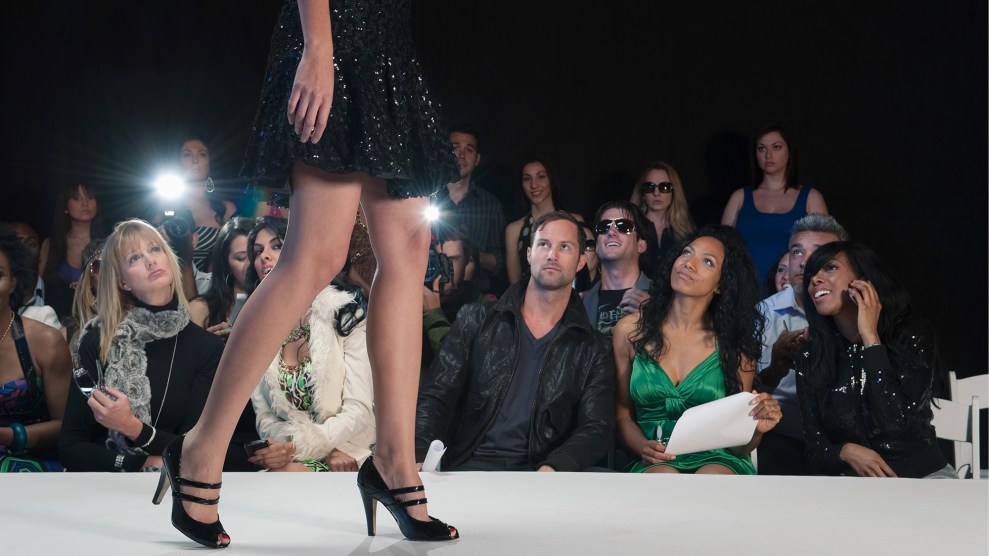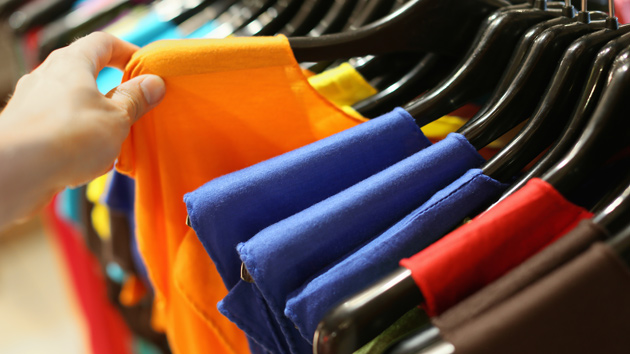
And H&M store in Almaty, Kazakhstan.Alexander Murashkin, H&M.
This story was originally published by the Guardian and is reproduced here as part of the Climate Desk collaboration.
An alliance of major fashion brands has announced that it is pausing its use of a tool to measure garments’ sustainability after critics described it as greenwashing.
Until this week, shoppers could go on to H&M’s website and check the environmental impact of 655 of its garments, as rated by the Higg Materials Sustainability Index (MSI), a suite of tools launched last year by a global nonprofit alliance, the Sustainable Apparel Coalition (SAC).
For example, one pair of cotton shorts was described as using “88 percent less [water] than conventional materials”; its global warming impact was “14 percent less than conventional materials.”
However, the SAC has announced that it is “pausing” its product-labeling tool after the Norwegian Consumer Authority (NCA) warned H&M Group two weeks ago against using the Higg index to support its environmental claims. It added that if it was still using such marketing by September 1, it would risk economic sanctions.
Although Norway’s consumer watchdog did not investigate H&M’s claims, it did so with those of a Norwegian outdoor brand, Norrøna (who also used the Higg index on its website). It concluded that the data was misleading to consumers and the claims unsubstantiated.
Although H&M and Norrøna were the first brands to embed the rating system on their product pages, SAC also counts Nike, Primark, Walmart, Boohoo, Amazon, and Tommy Hilfiger among its 250 members.
Fashion sustainability activists are rejoicing after SAC’s announcement, having been complaining about its methodology—which assesses the lifecycle of a product—since last spring, describing it as greenwashing.
“If you think of a lifecycle assessment as a clock face, the Higg MSI is only looking at midday to 3 p.m.—only a very selective part of the impact,” said Philippa Grogan of the fashion sustainability consultancy Eco-Age. “To represent how sustainable a product is, we need the assessment to go from midnight to midnight—so not just from cradle to shop, but from cradle to grave.”
For example, there is no information about whether a garment will release microplastics, or is biodegradable. “The Higg SMI does not enable consumers to make informed decisions,” added Grogan. “It’s derailing all the efforts of everyone involved.”
“This is textbook greenwashing…they’re misleading consumers by attaching this wildly inaccurate data to clothes and footwear.”
Critics also lament its use of outdated or unrepresentative research: “Brands can just upload their own data,” said Grogan. “They can add data from a small cotton farm that uses best practice, and not the data from a massive one.”
Earlier this month, the New York Times gave voice to more critics who claimed SAC was using research funded by the synthetics industry, thus enabling brands to claim that human-made fibers are more sustainable than natural ones.
Speaking to the Guardian, SAC’s CEO Amina Razvi said: “We constantly engage with both critics and stakeholders on the issues they have with the tools. That’s why our tools constantly evolve, based on feedback and the best available science.” She claimed that all the lifecycle assessment data is “vetted, verified, and validated,” but admitted that “outdated data” was an industry problem and required improvement.
During its hiatus, Razvi said the SAC would meet with the NCA to “clarify the misunderstandings or misconceptions about the methodology, and understand how our companies can make credible, consumer-facing claims.” She also said the SAC would do an independent, third-party review of the data and the methodology.
“It needs to make everything open source and stop operating from behind closed doors,” said Grogan, on how the Higg index should work.














